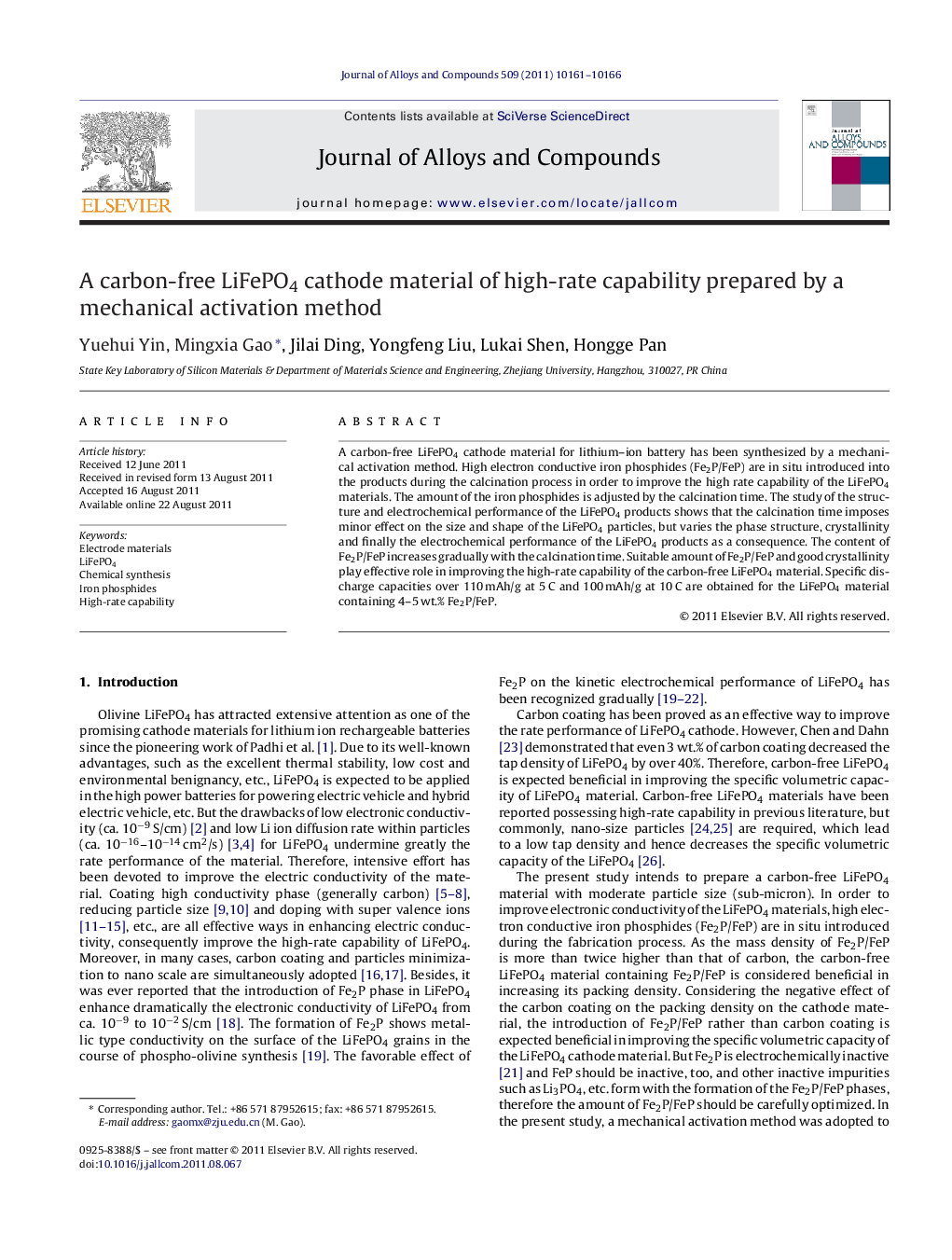| Article ID | Journal | Published Year | Pages | File Type |
|---|---|---|---|---|
| 1616918 | Journal of Alloys and Compounds | 2011 | 6 Pages |
A carbon-free LiFePO4 cathode material for lithium–ion battery has been synthesized by a mechanical activation method. High electron conductive iron phosphides (Fe2P/FeP) are in situ introduced into the products during the calcination process in order to improve the high rate capability of the LiFePO4 materials. The amount of the iron phosphides is adjusted by the calcination time. The study of the structure and electrochemical performance of the LiFePO4 products shows that the calcination time imposes minor effect on the size and shape of the LiFePO4 particles, but varies the phase structure, crystallinity and finally the electrochemical performance of the LiFePO4 products as a consequence. The content of Fe2P/FeP increases gradually with the calcination time. Suitable amount of Fe2P/FeP and good crystallinity play effective role in improving the high-rate capability of the carbon-free LiFePO4 material. Specific discharge capacities over 110 mAh/g at 5 C and 100 mAh/g at 10 C are obtained for the LiFePO4 material containing 4–5 wt.% Fe2P/FeP.
► Carbon-free LiFePO4 materials with favorable high-rate capability were synthesized by a mechanical activation method. ► The in situ introduction of ca. 4–5 wt.% Fe2P/FeP play important role in improving the high-rate capability of the material. The existence of Fe2P/FeP is less important for the discharge capacity at low discharge rates. ► The formation of Fe2P/FeP phases is calcination time dependent. The amount increases with the calcination time.
